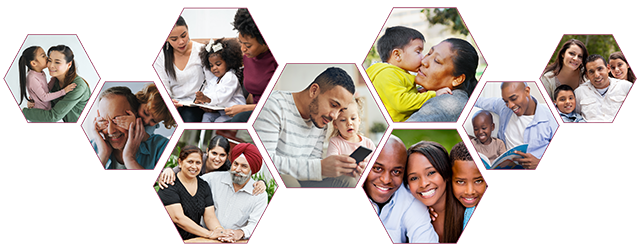Protection from Discrimination in Child Welfare Activities

What is the Child Welfare System?
The child welfare system is a group of services designed to promote the well-being of children by ensuring safety, achieving permanency, and strengthening families. While the primary responsibility for child welfare services rests with states and tribal agencies, private child welfare agencies and community-based organizations support these efforts by providing a wide range of in-home and out of home services to assist children and families in the child welfare system.*
What Role Does OCR Play to Ensure Equal Access to the Child Welfare System?
OCR is the law enforcement agency within HHS that is responsible for ensuring that covered child welfare entities comply with their legal obligation under Federal nondiscrimination law to provide equal access to child welfare involved youth and families. Laws enforced by OCR include:
- Title VI of the Civil Rights Act of 1964
- Title IX of the Education Amendments of 1972
- Section 504 of the Rehabilitation Act of 1973
- The Age Discrimination Act of 1975
- Title II of the Americans with Disabilities Act (ADA) of 1990
- The Multiethnic Placement Act (MEPA) of 1994, as amended by the Interethnic Adoption Provisions of the Small Business Job Protection Act of 1996
- Section 1557 of the Patient Protection and Affordable Care Act
Who is Protected by Nondiscrimination Laws?
Nondiscrimination laws protect a wide range of individuals from discrimination in the child welfare system including children, parents, grandparents, aunts, uncles, legal guardians, caretakers, companions, foster parents, adoptive parents and prospective parents.
What Child Welfare Entities Have Nondiscrimination Responsibilities?
Federal nondiscrimination laws apply to all state and local governments that administer child welfare programs and child welfare entities that either directly or indirectly receive Federal financial assistance from HHS. Examples of covered entities include but are not limited to:
- State and County Child Welfare Agencies
- Private Child Welfare Agencies
- State Court Systems
- Mental Health Providers
- Parent Education Providers
- Counseling Providers
- Anger Management Providers
- Substance Use Treatment Providers
What Types of Child Welfare Programs and Activities are Covered by Nondiscrimination Laws?
Nondiscrimination laws apply to a wide range of child welfare programs, activities and services, including child protective services investigations, child removals and child placements, safety and risk assessments, in-home services, parenting skills programs, foster and adoptive parent assessments, and court proceedings.
OCR's Child Welfare Enforcement Activities
OCR has received a broad array of complaints alleging race, color, national origin and disability discrimination in the child welfare system. OCR's investigations revealed child welfare involved families, youth and prospective parents encounter a wide range of discriminatory barriers when accessing critical child welfare services. We also found that child welfare agencies and state courts vary in the extent to which they have adopted nondiscrimination policies, practices and procedures. Here are a few examples of OCR's enforcement activities:
Race Discrimination
- OCR Settles with South Carolina Department of Social Services to Resolve a Finding of Race Discrimination – February 2005; See LOF - PDF | Agreement - PDF
National Origin Discrimination
- Arizona Department of Child Safety Agrees to Protect LEP Parents from Discrimination - January 2021; See Agreement - PDF
- OCR Settles with the Alabama Department of Human Resources to Resolve a Finding of National Origin Discrimination October 2017; See LOF | Agreement
Disability Discrimination
- Massachusetts Department of Children and Families Agrees to Address Discrimination Against Parents with Disabilities - November 2020; See Joint LOF - PDF | Agreement
- Oregon Department of Human Services Agrees to Protect Parents with Disabilities from Discrimination – December 2019; See Agreement - PDF
- Georgia Department of Human Services Agrees to Ensure Equal Access for Individuals with Disabilities to Foster and Adoption Programs and Services – January 2016; See LOF - PDF
Training & Technical Assistance
OCR partnered with SAMHSA, ACF and NCSACW to introduce a new five-part video and webinar series, "Civil Rights Protections for Individuals in Recovery from an Opioid Use Disorder" that informs audiences about the application of federal disability rights laws to child welfare programs and activities, discusses protections that apply to some individuals in recovery from an opioid use disorder, provides an overview of Medication-Assisted Treatment (MAT) and addresses common misconceptions about MAT as a treatment approach.
- View the complete video series - April 19, 2021
- View the Press Release
OCR partnered with ACF and DOJ to issue two guidance documents to child welfare field on the requirements of Title VI, Section 504, Title II and their implementing regulations. The guidance materials aim to ensure that child welfare entities and state courts know about their responsibilities to protect the civil rights of youth and families. The guidance materials are part of an ongoing partnership between the departments to help child welfare agencies protect the well-being of children and ensure compliance with federal nondiscrimination laws.
- Disability Rights Technical Assistance - August 2015 - PDF
- Title VI Technical Assistance on Child Welfare - October 2016 - PDF
HHS Online Resources on Topics Related to Child Welfare and Opioids
- Administration for Children and Families (ACF):
- Administration for Community Living (ACL)
- Office of the Assistant Secretary for Planning and Evaluation (ASPE):
- Substance Abuse and Mental Health Services Administration (SAMHSA):
- HHS.GOV/Opioids
Footnotes
- *.↩ Child Welfare Information Gateway. (2020). How the child welfare system works. Washington, DC: U.S. Department of Health and Human Services, Administration for Children and Families, Children's Bureau





